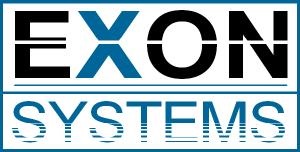Wireless LAN
Seamless Wide Area Network Connectivity Across Multiple Locations
Designing a Wireless LAN (WLAN) solution involves several key steps and considerations to ensure reliable connectivity, security, and performance. Here’s a comprehensive guide:
Assessment and Requirements Gathering
Understand the requirements of the WLAN, including coverage area, number of users/devices, types of applications, and security needs.
Conduct a site survey to analyze the physical environment, identify potential sources of interference, and determine optimal access point (AP) placement.
Network Architecture
Determine the WLAN architecture, such as centralized (with a wireless controller) or distributed (standalone APs).
Consider scalability, redundancy, and future expansion needs.
Hardware Selection
Choose appropriate wireless access points (APs) based on coverage requirements, capacity, and supported features (e.g., Wi-Fi standard, number of antennas, and throughput).
Select wireless controllers (if applicable) based on the size and complexity of the WLAN deployment.
RF Planning and Configuration
Configure RF parameters, including channel selection, transmit power, and channel width, to optimize coverage and minimize interference.
Implement features like band steering and airtime fairness to enhance performance in mixed-client environments.
Quality of Service (QoS)
Prioritize traffic based on application requirements to ensure optimal performance for latency-sensitive applications like VoIP or video streaming.
Implement QoS policies to manage bandwidth allocation and mitigate network congestion.
Security Implementation
Enable encryption protocols such as WPA2-PSK (Pre-Shared Key) or WPA3 for securing wireless communications.
Implement strong authentication mechanisms like 802.1X/EAP (Extensible Authentication Protocol) for enterprise-grade security.
Roaming Optimization
Configure roaming parameters to enable seamless handoff between APs without interruption to the user experience.
Use features like Fast BSS Transition (802.11r) to expedite roaming in fast-moving environments.
Device Management
Deploy a WLAN management system for centralized monitoring, configuration, and troubleshooting of APs and wireless clients.
Ensure firmware updates are regularly applied to APs to address security vulnerabilities and performance enhancements.
User Training and Support
Provide training to users on WLAN connectivity best practices, including password security, guest network usage, and reporting network issues.
Establish a helpdesk or support system to assist users with WLAN-related inquiries or problems.
Regular Maintenance and Optimization
Perform periodic WLAN audits to assess performance, security posture, and compliance with best practices.
Optimize WLAN settings based on usage patterns, feedback from users, and changes in the network environment.

